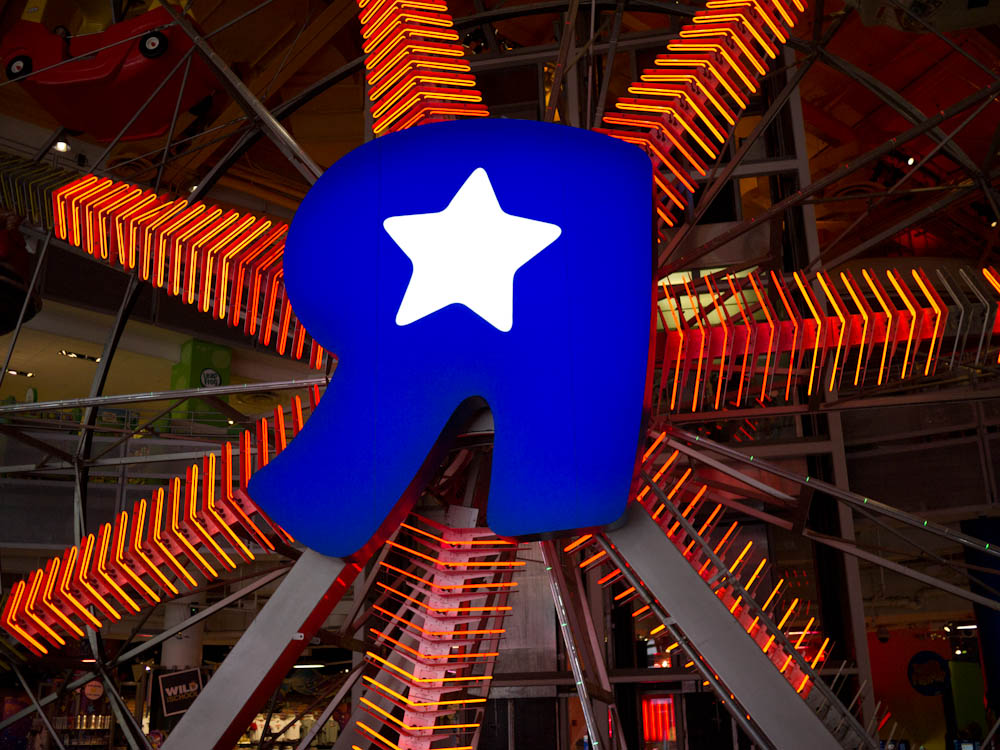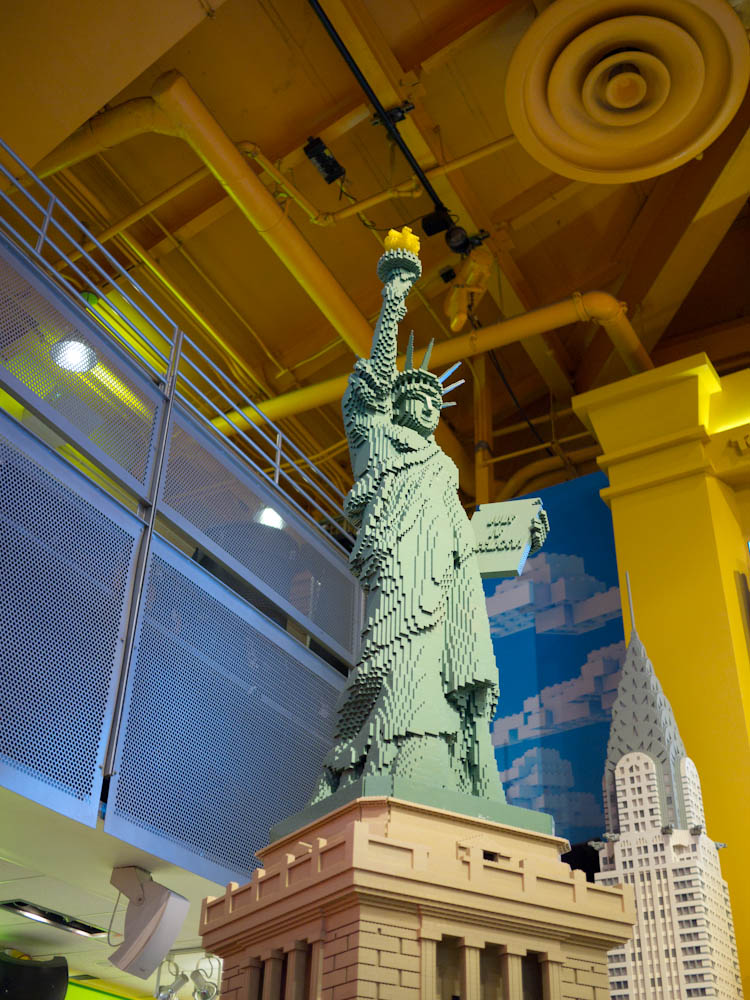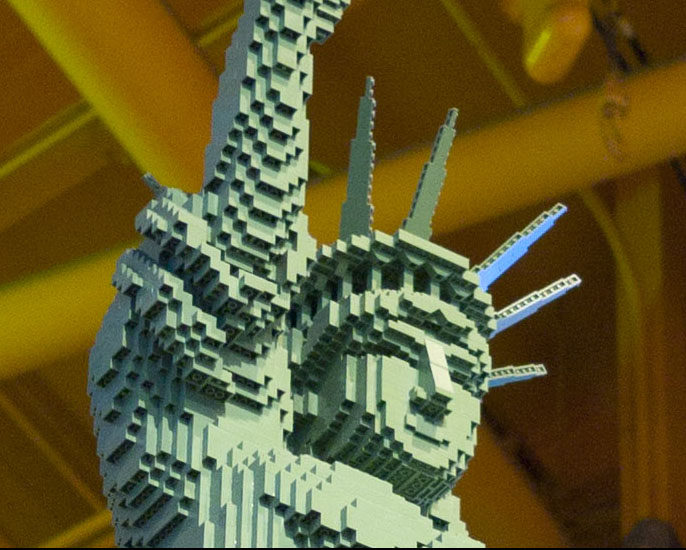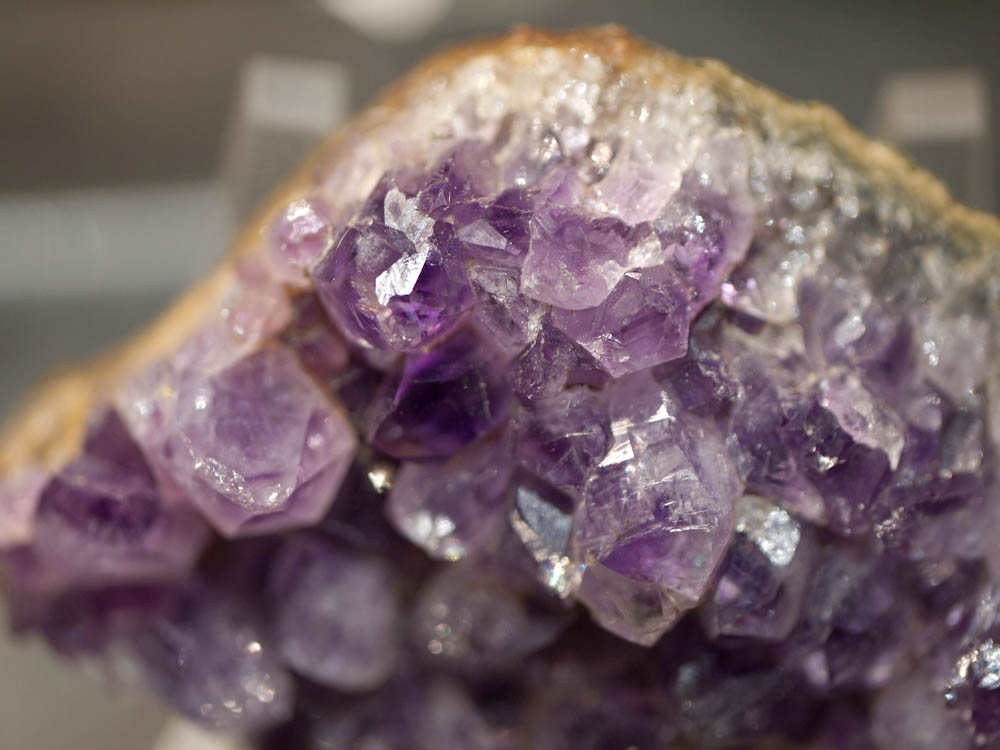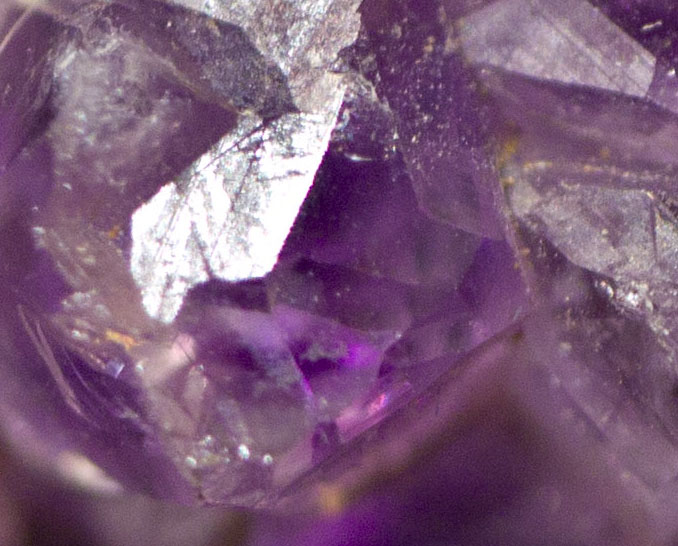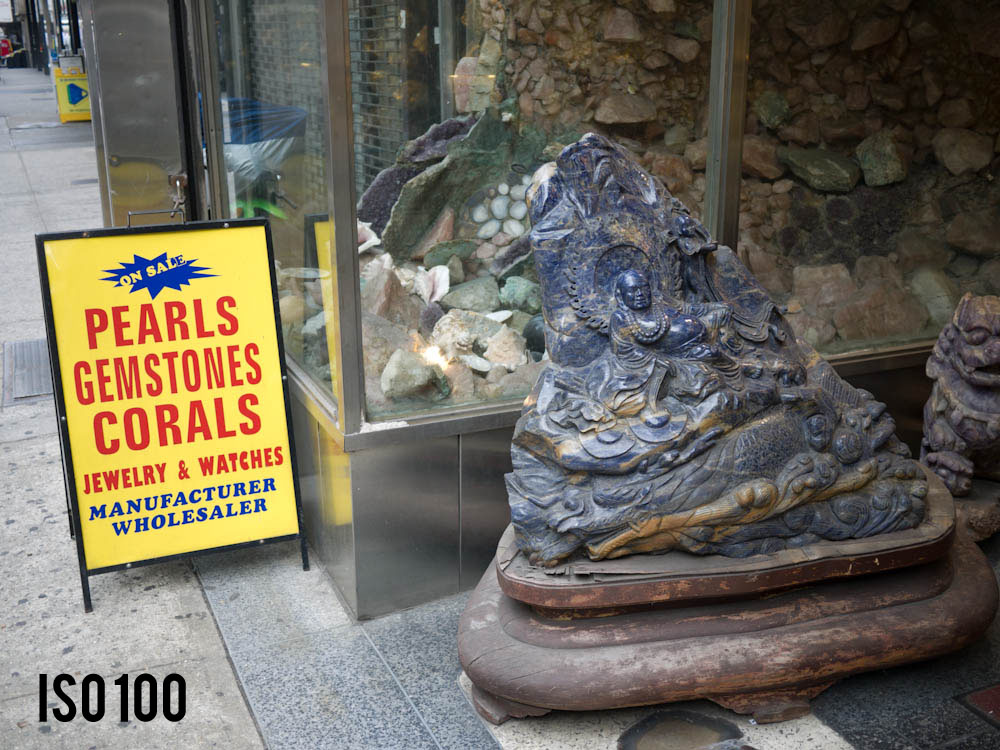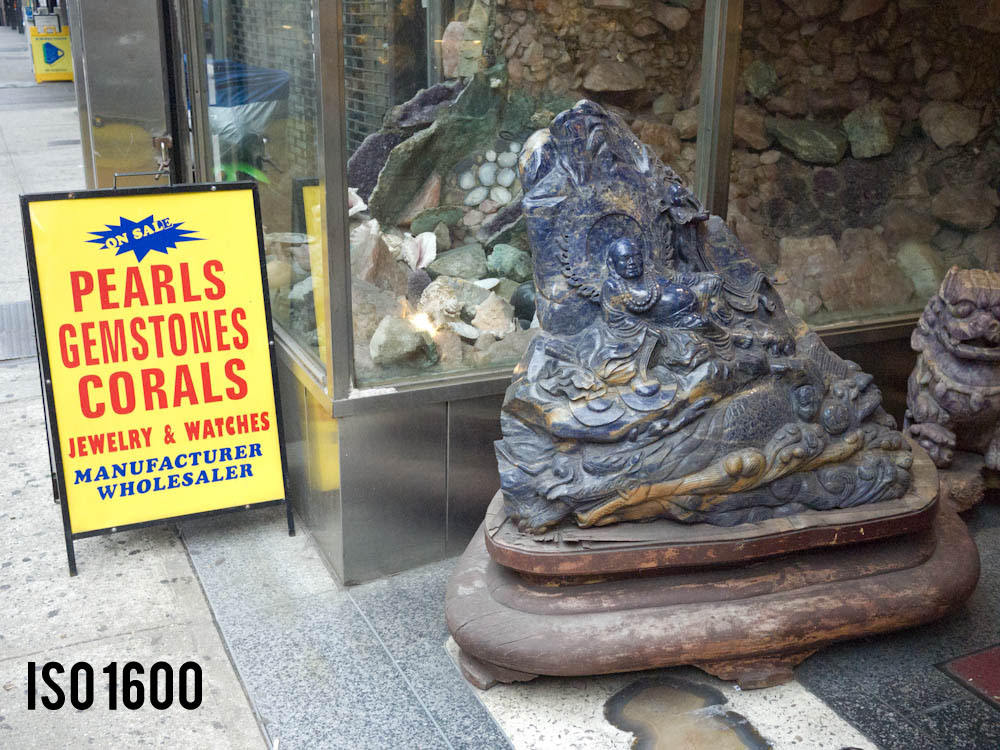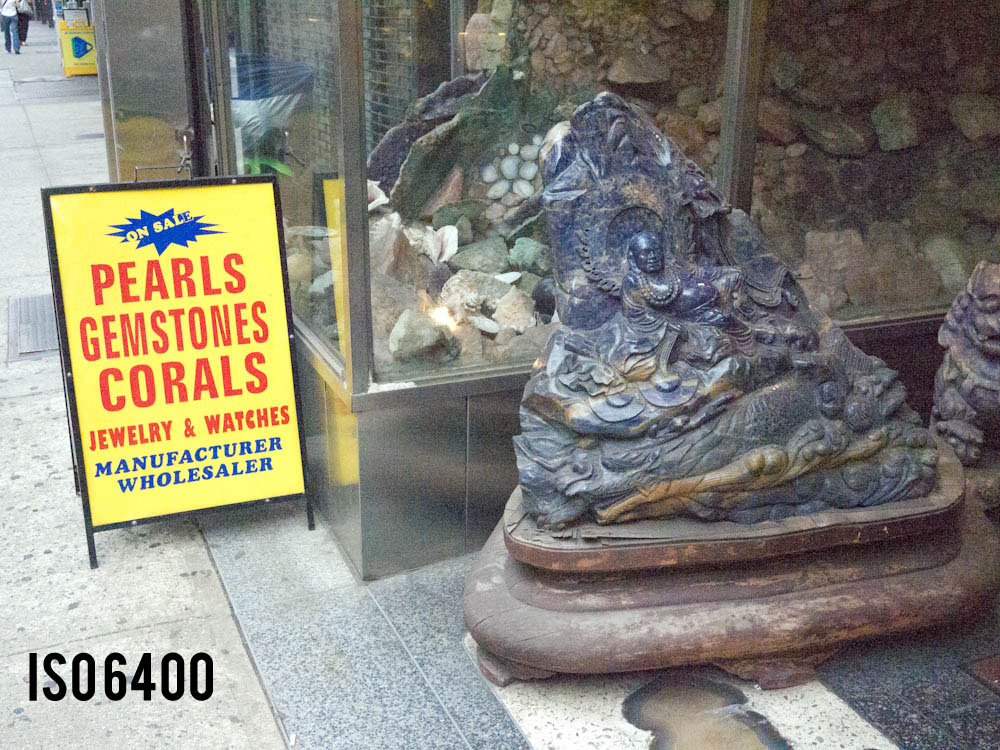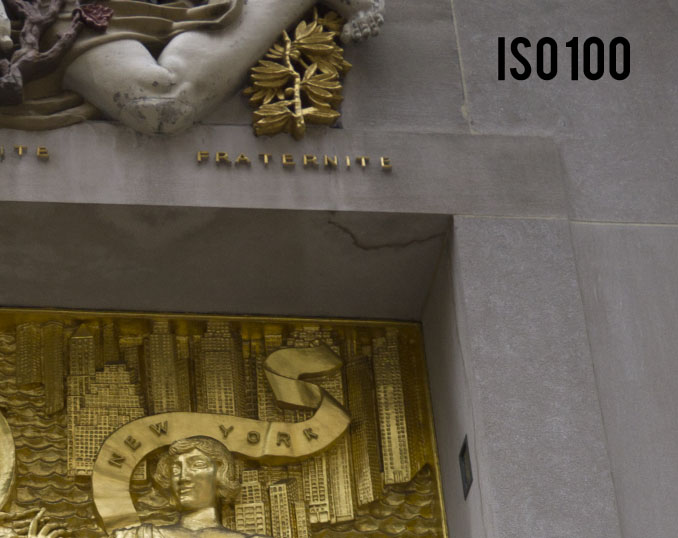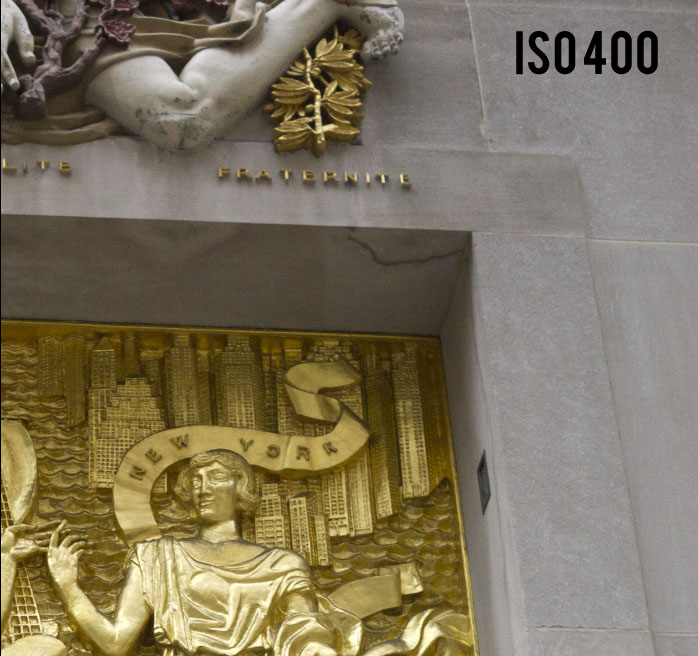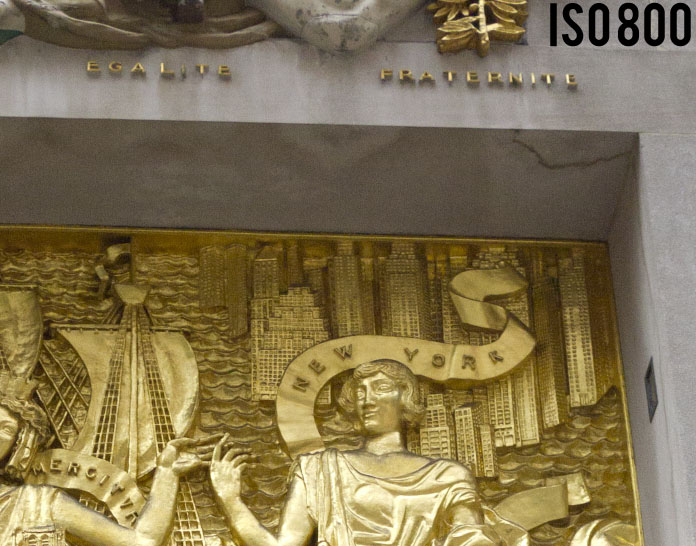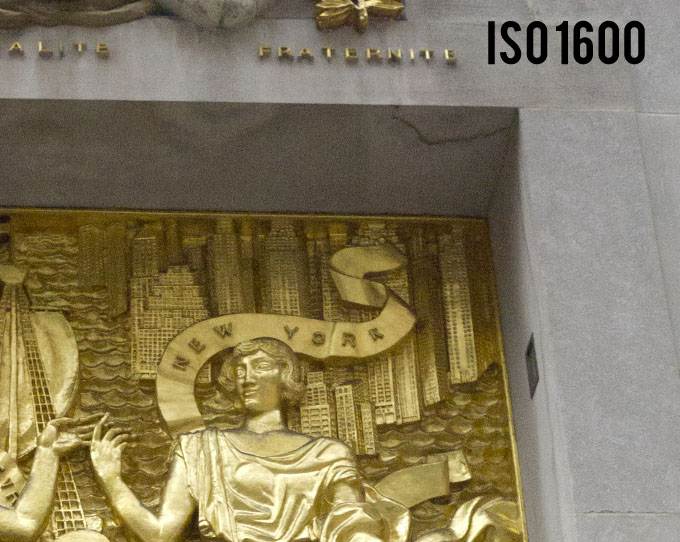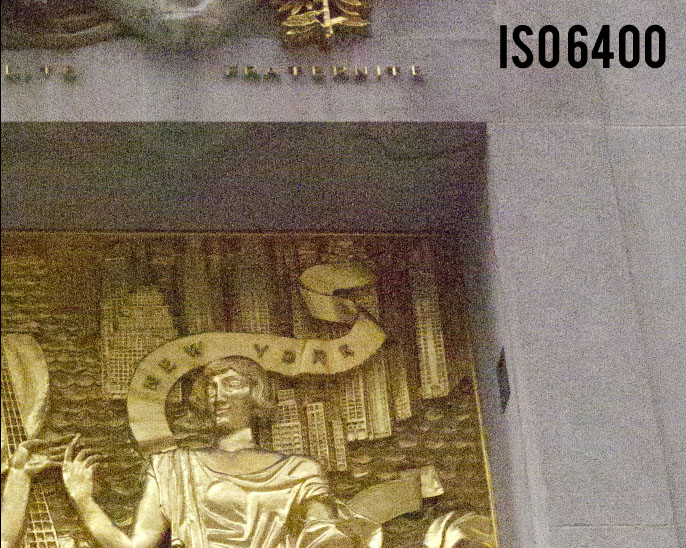Last Updated on 07/29/2011 by Chris Gampat
On my fourth day with the Panasonic Lumix DMC-G2I took the camera on a walk through the tourist center of New York, the midtown swath from Times Square to Rockefeller Center. Using both the Panasonic LUMIX G 20mm f/1.7 Aspherical Pancake Lens
and the Panasonic 45mm f/2.8 Aspherical MEGA OIS Lens
I toured Toys R Us Times Square and meandered through the plaza at Rockefeller Center. While I captured some remarkably sharp photos at both close and far distances, I also uncovered some troubling noise issues with the camera.
Toys R Us in Times Square has several large, interesting set pieces, including a three-story-tall ferris wheel, LEGO block replicas of some of New York’s landmarks, and an animatronic Tyranosaurus Rex. The store also has a small geology education section that lets kids crack geodes and buy fossils. It’s an ideal location for indoor shooting under various conditions.
This is a lego Statue of Liberty at ISO 400.
The individual blue blocks of the LEGO Statue of Liberty look sharp at ISO 400 using the 20mm lens at f/1.7, down to the texture on the undersides. However, when viewed at 100%, flat sections like dark blue shadows and the store’s dark yellow ceiling show a noticeable amount of noise. The noise slightly dulls the edges of the statue, but the texture of the individual bricks are still readily visible.
Then came the geodes. After popping on the 45mm macro lens, I went to the geology section and took some close-up shots of the mineral samples. Once again, contours and textures came through very clearly, but at 100% noise was significantly visible.
The G2 sharply captured the individual facets of a sample of amethyst, but zoomed in each facet displays a fine, consistent noise.
Finally, the ferris wheel in the Toys R Us perfectly displays the G2’s shutter lag. The spokes of the wheel individual flash in a rapid but predictable pattern. Because of the lag between depressing the shutter release and capturing the picture, it’s nearly impossible to catch the wheel when every spoke is illuminated. As you can see from the photo at the top of the page, even when all the spokes were lit up, the lag caught the wheel just as a few of the lights on one spoke were turned off.
Higher ISO Settings
(All photos shown full-frame)
The walk to Rockefeller Center offered some very good opportunities to test the G2’s various ISO settings. A large lapis Buddha statue in front of a midtown curio shop offered a variety of textures and colors for noise analysis. While an ISO 100 exposure of the statue proved to be remarkably sharp and accurate, an ISO 1600 exposure manifested extreme levels of noise, and at the camera’s maximum of ISO 6400 the statue looked like it was drawn with colored sand. At that level of sensitivity, the G2 produces pictures that are barely usable for any print larger than a poster stamp.
(All shots shown at 50% zoom)
One of the gold-painted facades over a door at Rockefeller Center presented another target for noise evaluation. The warm, textured sculptures and the rough grey stone of the facade supported the observations I first made in Toys R Us and further explored with the Buddha statue. At ISO 400, noise is very noticeable on any flat surface. At ISO 800 the noise becomes even more prominent and at ISO 1600 it becomes borderline unusable. Once again, cranking up sensitivity to ISO 6400 produced extreme levels of noise that damaged or destroyed all fine details. Compared to even entry-level DSLRs, the smaller sensor of the Micro Four Thirds G2 can’t compare when it comes to dealing with noise.
More to come in the review.
Please Support the Phoblographer
We love to bring you guys the latest and greatest news and gear related stuff. However, we can’t keep doing that unless we have your continued support. If you would like to purchase any of the items mentioned, please do so by clicking our links first and then purchasing the items as we then get a small portion of the sale to help run the website.


